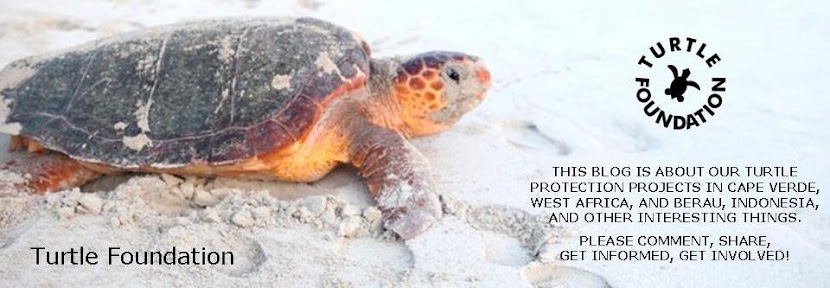At least three people have died and hundreds more were sickened after
consuming toxic turtle meat in Mentawai Island, West Sumatra, a local
news portal reported on Wednesday.
Rijel Samaloisa, deputy mayor of Mentawai, told news portal Vivanews.com that three children — a 3-year-old, an 8-year-old and an 11-month-old – died after eating the tainted meat on Tuesday night.
“The first victim died this morning [Tuesday] and the other two passed away in the afternoon. The latest information, a child aged 7 years old, is in critical condition at the Tuapejat Regional Hospital,” Rijel said.
He said residents of a fisherman’s community in the Sao hamlet of Bosua village, South Sipora, ate turtle that had been caught on Sunday. The deputy mayor added that some victims died because their families could not seek treatment in time.
“People were [sick] on Sunday but they were not directly taken to get medication,” he said.
All of the poisoned survivors have since received medical treatment, Rijel said, adding that they were admitted to Tuapeijat Hospital and Sioban community health center.
Sindonews.com reported that limited access to the village hindered the ability to seek treatment for the sickened villagers, as the only means of transportation which can accommodate many people at once is a boat with an outboard engine. Soa hamlet is located at the southern part of Sipora island and it can take up to two hours in good weather to reach the district health facilities. The regional hospital could take up to four hours to reach from the village, which has no mobile phone coverage, according to the portal.
Rijel said this was not the first time Mentawai people were sickened after consuming turtle meat.
“People have never learned, there were similar cases like this in the past,” he said.
Vivanews.com reported that 36 people on the island were poisoned from turtle meat on March 16.
Mentawai Island Health Office head Warta Siritoitet said there were four cases of poisoning from turtle meat in the past year in Mentawai.
Rijel said that the Mentawai administration would issue a mandate to prohibit the consumption of turtle.
“People will be prohibited to eat any kinds of turtle. We will distribute [a circular about the ban] in the mosques, churches, governments offices and other places,” he said.
Rijel Samaloisa, deputy mayor of Mentawai, told news portal Vivanews.com that three children — a 3-year-old, an 8-year-old and an 11-month-old – died after eating the tainted meat on Tuesday night.
“The first victim died this morning [Tuesday] and the other two passed away in the afternoon. The latest information, a child aged 7 years old, is in critical condition at the Tuapejat Regional Hospital,” Rijel said.
He said residents of a fisherman’s community in the Sao hamlet of Bosua village, South Sipora, ate turtle that had been caught on Sunday. The deputy mayor added that some victims died because their families could not seek treatment in time.
“People were [sick] on Sunday but they were not directly taken to get medication,” he said.
All of the poisoned survivors have since received medical treatment, Rijel said, adding that they were admitted to Tuapeijat Hospital and Sioban community health center.
Sindonews.com reported that limited access to the village hindered the ability to seek treatment for the sickened villagers, as the only means of transportation which can accommodate many people at once is a boat with an outboard engine. Soa hamlet is located at the southern part of Sipora island and it can take up to two hours in good weather to reach the district health facilities. The regional hospital could take up to four hours to reach from the village, which has no mobile phone coverage, according to the portal.
Rijel said this was not the first time Mentawai people were sickened after consuming turtle meat.
“People have never learned, there were similar cases like this in the past,” he said.
Vivanews.com reported that 36 people on the island were poisoned from turtle meat on March 16.
Mentawai Island Health Office head Warta Siritoitet said there were four cases of poisoning from turtle meat in the past year in Mentawai.
Rijel said that the Mentawai administration would issue a mandate to prohibit the consumption of turtle.
“People will be prohibited to eat any kinds of turtle. We will distribute [a circular about the ban] in the mosques, churches, governments offices and other places,” he said.
See original article at: jakarta globe article

